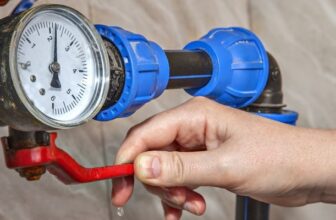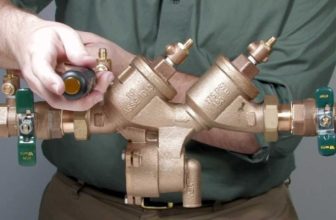
When installing a double sink, you have to determine how much space you’ll need for the sink drain tailpipes and the garbage disposal unit. The length of the tailpipes may be affected by the depth of the sink, so be sure to measure it carefully. Then, cut the tailpieces to length. The PVC drain pipes are made of two tailpieces and one J waste pipe, which are connected by a T connector and a P trap. The drain tailpieces extend a few inches from the bottom of the sink. If you’re installing a deeper sink, you may have to cut them longer.
Single sink plumbing
Changing the plumbing on a single sink to a double one requires a larger hole. The main questions regarding the double sink plumbing include where to install the garbage disposal, P-trap, and dishwasher drain hose. However, the basic installation process is the same for both sinks. First, you need to turn off the water supply to the sink. Next, you need to remove the strainer and flange, which is a metal collar-strain combo that holds the pipes below the sink. This strainer prevents big chunks of food from going down the drain. Install the strainer and flange by unscrewing the locknut. Then, remove the rubber washer.
Once the sink drain pipe is installed, it should fit into the tailpiece of the sink drain. A slip nut should be slid onto the end of the tailpiece and tightened on the threaded housing. Repeat the steps above to install the other drain. Install the 90-degree elbow in the farthest part of the pipe from the sink outlets. After that, install a sanitary tee on top of the elbow. Measure the distance between the elbow and tee to determine how much pipe you need to connect.
Double sink plumbing
There are some basic differences between single and double sink plumbing. One type of plumbing requires a 90-degree sanitary tee, while the other uses a horizontal PVC pipe. Once the plumbing is installed, the sinks will share a wall drain. Double sinks can share one drain pipe, but they should not share a drain tailpiece. A double sink also requires a separate waste pipe.
Before you start the installation process, you need to be aware of the plumbing regulations. Double sinks share the same plumbing but are constructed differently. A double sink is 60-cm long, so it will need a siphon and pipes laid accordingly. To remove the drain kit, unscrew the locknut at the bottom of the screen. You should also unhook the drain pipe that serves the kitchen sink and the washer.
Installation of a garbage disposal unit in a double sink
Before you begin installing a garbage disposal unit in your double sink, make sure that you have shut off the power to the cabinet below. If power is still present, use a circuit tester to ensure that the main breaker is turned off. Remove the cover plate from the bottom of the disposal. Next, connect the disposal’s wires according to the manufacturer’s instructions. Be sure to connect the green grounding screw to the green wire. Finally, attach the power cord to the disposal’s outlet.
To install a new garbage disposal, you must remove the old one. To remove the old one, you must use a plumber’s putty knife to cut away the old flange. Next, remove the old mounting assembly. Then, unscrew the sink flange. Once you have removed the old disposal, you must insert the new one. To do this, insert the disposal wrench into the lower mounting ring and tighten it to a secure fit.
Calculating the length of the drain tailpipes
The minimum vertical distance between the sink’s drain and the trap isn’t mandated by building codes. Rather, a combination of factors determines how long a drain tailpiece should be. Most of the difference between these two measurements is based on where the vent pipe connects to the sink. For instance, if the vent pipe runs horizontally from the sink to the p-trap, then the tailpiece length should be at least four inches.
When installing a double sink, it is important to consider how long each drain tailpipe must be to reach the bottom of the sink. For shallow sinks, you’ll need a longer tailpiece. If you can’t move the drain outlet pipe, you can measure the length of each tailpiece and cut it accordingly. Once the pipes are at the same depth under the sinks, you can fit a washer around each tailpiece. If your sinks are too shallow, you can use a T-connector to connect the J tailpipes. T-connectors require slip nuts and washers to secure them to the pipes. Make sure that they are hand tightened.
Changing the height of the sanitary tee in a double sink
To change the height of the sanitary tee in a double sink, follow these instructions: Cut a 2-inch drainpipe. Then, route it through a pair of holes on each side of the wall. Next, connect the sanitary tee with a PVC street elbow. Then, use a 3/4-to-1/2-inch CPVC reducer on both sides and a 1-1/2-inch cap on each side.
When connecting two sinks, the sanitary tee is used to connect the drains of the two. It is different from the supply cross fittings. It was once used to join drains on side-by-side fixtures. You can’t just lay the sanitary tee on its side because it restricts flow. So, be sure to get an appropriate one if you’re changing the height of a double sink.




